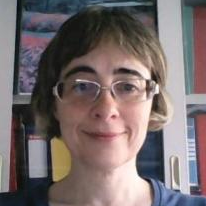Assessment of Earthquake-Induced Soil Liquefaction Hazard—Volume II
A special issue of Geosciences (ISSN 2076-3263). This special issue belongs to the section "Natural Hazards".
Deadline for manuscript submissions: closed (15 December 2023) | Viewed by 384
Special Issue Editors
Interests: soil liquefaction; ground response analysis; seismic hazard; GIS; critical infrastructures; disaster risk reduction
Special Issues, Collections and Topics in MDPI journals
Interests: engineering geological mapping; hazard assessment (subsidence, landslide, liquefaction); geological interpretation of satellite interferometric data
Special Issues, Collections and Topics in MDPI journals
Interests: geotechnical engineering; soil–structure interaction; laboratory testing; seismic risk; soil liquefaction
Special Issue Information
Dear Colleagues,
Seismic liquefaction is a phenomenon of soil instability that may lead to disastrous consequences for structures, infrastructures and the environment. Liquefaction is associated with a reduction of strength and stiffness of a saturated deposit of loose sands due to pore water pressure build-up caused by ground shaking. Liquefaction and related phenomena have been responsible for tremendous amounts of damage during historical earthquakes worldwide. When liquefaction occurs, the strength of the soil decreases, and the ability of a soil deposit to support foundations for buildings is reduced, as demonstrated by the overturned apartment complex buildings in Niigata in 1964. Liquefied soil also exerts higher pressure on retaining walls, which can cause them to tilt or slide. This movement can cause settlement of the retained soil and the destruction of structures on the ground surface. Increased water pressure can also trigger landslides and damage to dams, such as the Lower San Fernando dam, which suffered an underwater slide during the San Fernando earthquake in 1971. More recent examples of soil liquefaction, which caused disastrous consequences, include the phenomena which occurred during the 2010-2011 seismic sequence at Christchurch in New Zealand, the 2012 Emilia earthquakes in Northern Italy, the 2018 Sulawesi-Palu earthquake in Indonesia, the 2020 earthquakes in Croatia and the ongoing 2023 seismic sequence in Türkiye.
In this framework, a collection of papers is launched to deliver a Special Issue which aims to provide an overview of innovative approaches to address earthquake-induced soil liquefaction and its consequences. This Special Issue represents the second volume of a successful collection of papers just published in this field (https://0-www-mdpi-com.brum.beds.ac.uk/journal/geosciences/special_issues/soil_liquefaction_hazard).
Articles focusing on liquefaction hazard assessment at different spatial scales, vulnerability and resilience of structures and infrastructures to soil liquefaction, technologies to mitigate the liquefaction phenomenon and its consequences, physical and numerical modeling, laboratory and in situ experiences, computational tools for liquefaction risk assessment, etc., are welcome in this Special Issue.
Prof. Francesca Bozzoni
Prof. Dr. Claudia Meisina
Dr. Renato Maria Cosentini
Guest Editors
Manuscript Submission Information
Manuscripts should be submitted online at www.mdpi.com by registering and logging in to this website. Once you are registered, click here to go to the submission form. Manuscripts can be submitted until the deadline. All submissions that pass pre-check are peer-reviewed. Accepted papers will be published continuously in the journal (as soon as accepted) and will be listed together on the special issue website. Research articles, review articles as well as short communications are invited. For planned papers, a title and short abstract (about 100 words) can be sent to the Editorial Office for announcement on this website.
Submitted manuscripts should not have been published previously, nor be under consideration for publication elsewhere (except conference proceedings papers). All manuscripts are thoroughly refereed through a single-blind peer-review process. A guide for authors and other relevant information for submission of manuscripts is available on the Instructions for Authors page. Geosciences is an international peer-reviewed open access monthly journal published by MDPI.
Please visit the Instructions for Authors page before submitting a manuscript. The Article Processing Charge (APC) for publication in this open access journal is 1800 CHF (Swiss Francs). Submitted papers should be well formatted and use good English. Authors may use MDPI's English editing service prior to publication or during author revisions.
Related Special Issue
- Assessment of Earthquake-Induced Soil Liquefaction Hazard in Geosciences (10 articles)







